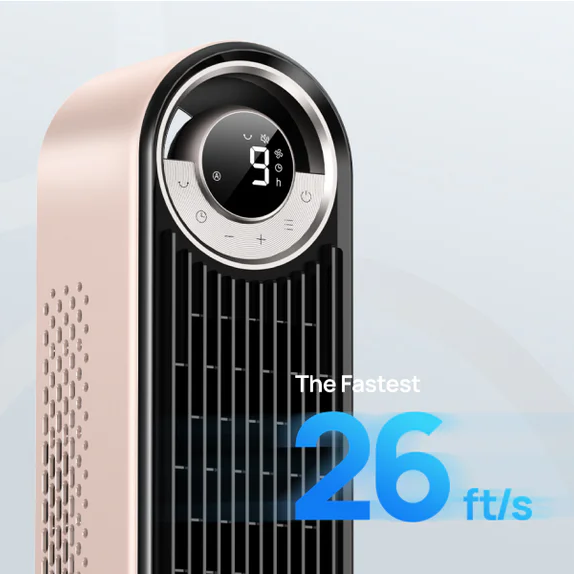When it comes to tower fans, one of the main concerns many people have is noise. There's nothing more disruptive than a noisy fan whirring away in the background when you're trying to work, relax, or sleep. So, are tower fans loud? In this post, we'll explore the factors that influence noise levels and share tips on how to minimize fan noise in your space.
What Makes a Tower Fan Loud or Quiet?
Noise levels can vary depending on the type and design of the fan. Tower fans, in particular, are known for their slim profiles and vertical designs, which typically result in quieter operation compared to larger, boxier fans. However, the motor, fan blades, and speed settings all play a role in the noise level.
Motor: The Heart of the Fan
Traditional Motors:
These motors often provide powerful airflow but tend to produce more noise due to higher friction, which can lead to a noticeable hum or whirring sound, particularly on higher settings.
High-torque DC Motor:
It's designed to operate more smoothly and quietly, even at higher speeds. With super-precision bearings, the Smart Tower Fan 519S, running at 1428 RPM, reduces friction, leading to a stabler, quieter, but faster cooling experience. This kind of motor is ideal for both quiet settings and powerful cooling without excessive noise.

Fan Blades: Shaping the Airflow
Aerodynamic Blades:
These blades are specifically crafted to reduce turbulence, improve airflow efficiency, and result in quieter operation. Fans featuring these blades, like the DREO Crusier Pro T3 with its 210 airfoil-shaped blades, can significantly lower turbulence noise by up to 40%. At the same time, they enhance airflow by 59%, making the cooling experience not only quieter but also more effective in delivering the desired comfort.

Speed Settings: Adjusting the Noise Level
Limited Speeds:
Fans with fixed or fewer speed settings may run at higher speeds by default or lack the ability to adjust airflow, which often results in more noise, particularly at full power. Without the flexibility to reduce speed, these fans work harder to maintain airflow, increasing noise levels.
Versatile Speeds:
Fans with multiple speed settings, such as the DREO Pilot Max S, offer up to 12 speed levels (via the DREO app), allowing you to fine-tune the airflow to your exact needs, from a soft, whisper-quiet breeze at the lowest setting to a more powerful burst of cooling at higher speeds.
Even as the speed increases, the airflow becomes more intense, the flexibility to adjust ensures that noise stays controlled. This versatility ensures that no matter the environment or need—whether you want a burst of cooling or a gentle airflow—you can customize the fan's noise and airflow to suit your space.
How to Evaluate Noise Levels
When selecting a tower fan, it's important to check the decibel (dB) rating. The higher the dB level, the louder the fan. For comparison, a typical conversation is around 60 dB, while a whisper might be around 34 dB. Most tower fans fall somewhere in between.
Another key feature to look for is whether the fan includes a "sleep" or "Auto" mode. These modes are designed to adjust the fan's speed and noise level automatically based on your environment. The Auto mode in the DREO Nomad One, for example, adjusts the fan speed according to the room temperature, providing optimal cooling without excess noise. Sleep mode, on the other hand, reduces the speed and brings the noise level down to a whisper-quiet 28 dB, making it ideal for a peaceful night's rest.

How to Minimize Fan Noise in Your Space
Ensure Proper Placement: Ensure the fan is stable on a flat surface. If the fan is wobbly, vibrations can lead to unnecessary noise.
Place the Fan in a Corner or Against a Wall: Positioning the fan in these locations helps absorb sound and can make it quieter.
Keep the Fan Clean: Dust and debris can increase friction and noise. Regularly clean the fan to ensure smooth operation and quieter performance.
Use Soundproofing Materials: Consider using foam panels, curtains, or other soundproofing materials around the fan area to absorb noise and prevent sound from echoing.
Final Takeaway
To sum it up, tower fans can be quiet when designed with the right features. By choosing one with the right motor, blades, and speed settings, you can enjoy cooling without the noise. Looking for the perfect balance of power and silence? Check out DREO's tower fan lineup for a smoother, quieter cooling experience.


